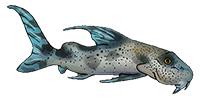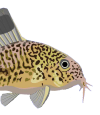Marcos Mendes de Barros Negreiros, Seizo Yamashita, Trajano Sardenberg, Edson Luiz Fávero Jr, Felipe Augusto Horácio Ribeiro, William Teixeira Haddad Jr, & Vidal Haddad Jr. 2016. Case Report: Diagnostic imaging of injuries caused by venomous and traumatogenic catfish. Revista da Sociedade Brasileira de Medicina Tropical, 49 (4), 530-533. July/Aug. 2016
http://dx.doi.org/10.1590/0037-8682-0359-2015
ABSTRACT:
Injuries caused by fish are common in marine and freshwater environments. Catfish of the Ariidae and Pimelodidae families cause about 80% of those injuries. One of the complications of injuries caused by fish is the retention of fragments of the stinger in the wounds. Here we report five cases (of a total of 127 injuries caused by catfish in the Brazilian coast) in which the retained fragments were detected by radiological examination. Retained fragments should be considered in patients stung by catfish. A simple X-ray is sufficient to detect fragments of stingers in the wounds.
- Key words: Bites and Stings; Catfish; Computed tomography.




